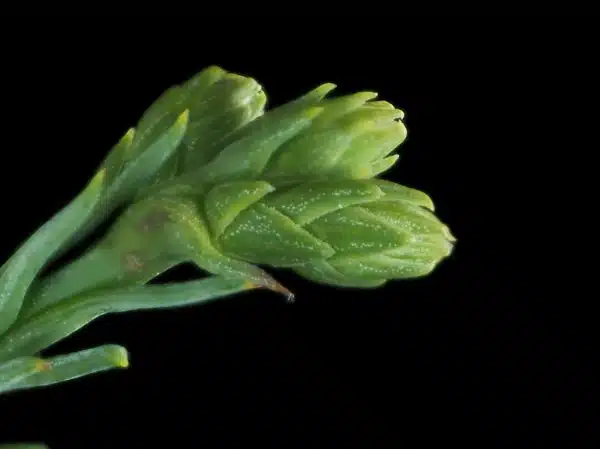Sequoia sempervirens, commonly known as the coast redwood, is an iconic tree species that grows along the western coast of North America. These majestic trees can grow to be over 300 feet tall and live for thousands of years. As one of the largest and oldest tree species in the world, coast redwoods are a source of inspiration and admiration for many people. However, growing and caring for these trees requires a certain level of expertise and knowledge.
In this article, we will explore the essential aspects of growing and caring for Sequoia sempervirens (coast redwood). We will discuss everything from planting to pruning, soil requirements to watering needs, and pest control to disease prevention. Whether you are a homeowner looking to plant a single specimen or a professional landscaper tasked with maintaining an entire grove of coast redwoods, this guide will provide you with the information you need to succeed in your efforts. So let’s get started on our journey towards understanding how best to care for these magnificent trees!
Overview Of Sequoia Sempervirens (Coast Redwood)
The Sequoia sempervirens, commonly known as the Coast Redwood, is a magnificent evergreen tree that can grow up to 379 feet tall. Its towering presence and sheer size make it an awe-inspiring sight to behold. It is often compared to a giant sentinel, standing tall and proud in its natural habitat.
Historically, this species of tree has played an important role in the cultural and economic development of California. The indigenous people relied on the redwood for food, shelter, and medicine. Later on, the logging industry took advantage of its timber for construction purposes. Today, it is considered a symbol of California’s natural beauty and serves as a popular tourist attraction.
Apart from its historical significance, the ecological importance of the Sequoia sempervirens cannot be overstated. As one of the largest living organisms on earth, it provides critical habitat for many species of animals and plants. Its dense foliage also plays a significant role in regulating the local climate by absorbing carbon dioxide and producing oxygen through photosynthesis.
Choosing The Right Location For Planting
Soil Requirements: Sequoia sempervirens (coast redwood) prefers well-draining, rich loam soil with a pH level of 6.0-8.0. Sun Exposure: This species of tree prefers full sun, however, can tolerate partial shade, especially during the warmer months. Watering: This species of tree requires regular watering during the first 2-3 years to help with establishment. Fertilization: Sequoia sempervirens (coast redwood) does not require fertilization, however, if desired, a slow-release fertilizer can be applied in early spring.
Soil Requirements
When it comes to planting sequoia sempervirens, selecting the right location is crucial for the tree’s growth and survival. One of the most important factors to consider is soil requirements. Sequoia sempervirens thrives in well-drained soils with a pH balance between 6.0 and 7.5. Any extreme soil conditions outside this range can negatively affect the tree’s nutrient uptake and overall health.
Additionally, sequoia sempervirens requires soil with high nutrient content to support its rapid growth rate. The ideal soil should be rich in organic matter, such as compost or leaf litter, to provide a steady supply of nutrients over time. It’s recommended to conduct a soil test before planting to determine if any amendments are necessary to achieve optimal nutrient levels.
Overall, choosing the right location with proper soil requirements is essential for successfully growing and caring for sequoia sempervirens. By ensuring that the pH balance and nutrient content are suitable for the tree’s needs, gardeners can foster healthy growth and longevity of these magnificent giants.
Sun Exposure
When it comes to planting sequoia sempervirens, selecting the right location is crucial for the tree’s growth and survival. In addition to soil requirements, sunlight exposure is another important factor to consider. Sequoia sempervirens requires full sunlight exposure to thrive; however, it also has a moderate level of shade tolerance. While young trees can tolerate some shade, mature trees require unobstructed sunlight to maintain their health and vigor.
It’s essential to choose a location that provides adequate sunlight for sequoia sempervirens. The ideal site should receive at least six hours of direct sunlight per day with minimal shading from nearby buildings or trees. Additionally, it’s crucial to avoid planting in areas prone to excessive wind exposure, as this can cause damage and stress on the tree.
Overall, selecting a location with proper sun exposure is essential for successfully growing and caring for sequoia sempervirens. By ensuring that the tree receives enough direct sunlight while also having some level of shade tolerance, gardeners can promote healthy growth and longevity of these magnificent giants.
Soil Requirements For Optimal Growth
After carefully selecting the right location for planting a sequoia sempervirens (coast redwood), it is crucial to consider the soil requirements for optimal growth. The coast redwood thrives in moist, well-draining soils that are rich in nutrients. A soil pH level between 6.0 and 7.5 is ideal for these trees.
To ensure that your sequoia sempervirens receives the necessary nutrients, it is recommended to conduct a soil test before planting. This will determine if any amendments are needed to optimize soil fertility. Nitrogen, phosphorus, and potassium are essential nutrients required for healthy growth and development of the coast redwood.
In addition to providing the necessary nutrients, proper watering techniques are critical for maintaining a healthy sequoia sempervirens. In the subsequent section, we will discuss the watering needs and techniques necessary for successful cultivation of this magnificent tree species.
Watering Needs And Techniques
Ironically, while coast redwoods are native to the wet coastal regions of California, they also require careful watering to thrive. Overwatering can lead to root rot and other diseases, while underwatering can cause stress and stunted growth. Therefore, it is crucial to understand the watering needs and techniques for sequoia sempervirens.
One option for consistent and efficient watering is a drip irrigation system. This method involves placing small tubes or emitters at the base of the tree, which slowly release water directly into the soil. Drip irrigation allows for precise control over water usage and minimizes evaporation. Another option is a misting system, which sprays a fine mist over the tree canopy. While misting systems do not provide as much water to the roots as drip irrigation, they can help increase humidity levels and reduce stress on the tree during hot weather.
It is important to note that frequency and amount of watering will vary depending on factors such as climate, soil type, and tree age/size. Consulting with a local horticultural expert or arborist can help determine an appropriate watering schedule for your specific location and tree characteristics.
| Watering Method | Pros | Cons |
|---|---|---|
| Drip Irrigation | Precise control over water usage; minimizes evaporation | Requires installation; may be expensive |
| Misting System | Increases humidity levels; reduces stress during hot weather | Does not provide as much water to roots; may promote fungal growth if used too often |
As important as proper watering techniques are for healthy coast redwoods, fertilizing strategies also play a vital role in tree care. Continue reading to learn about effective ways to nourish your sequoia sempervirens for optimal growth and longevity.
Fertilizing Strategies For Healthy Trees
Proper fertilization is essential for maintaining the health and growth of sequoia sempervirens. The first step in developing an effective fertilizing strategy is to conduct a soil test to determine the nutrient levels present. This helps to identify any deficiencies and allows for the selection of the appropriate fertilizer.
Organic options are a great choice for those who prefer natural alternatives. Compost, manure, bone meal, and blood meal are some examples of organic fertilizers that can be used for sequoia sempervirens. These options provide a slow release of nutrients over time, promoting healthy growth and development.
Synthetic options are also available and can be more convenient as they often come pre-packaged with specific nutrient ratios. However, it is important to use these products carefully and according to package instructions as overuse can lead to harmful effects on the tree’s health. Ultimately, selecting a fertilizing strategy comes down to personal preference and the needs of the tree in question.
Pruning Guidelines For Proper Shaping
Fertilizing strategies are important for maintaining healthy growth and development of trees. However, pruning is equally important in shaping the structure and form of the tree. Pruning involves removing dead, diseased or broken branches, as well as those that are unwanted due to their location or direction of growth.
Pruning frequency varies depending on the age and size of the tree. Young trees require more frequent pruning to develop a strong framework and to remove any competing branches. As the tree matures, pruning should be done less frequently but still regularly to maintain its shape and health. It is best to prune during the dormant season, usually in late winter or early spring before new growth begins.
Tools for pruning include hand pruners, loppers, pole saws, and chainsaws depending on the size of the branch being removed. It is important to use sharp tools to make clean cuts that will heal properly. Before using any tool, it should be sterilized with rubbing alcohol to prevent spreading disease from one part of the tree to another.
Transition: While proper pruning can help prevent many issues with sequoia sempervirens (coast redwoods), there are still common pests and diseases that gardeners need to watch out for in order to ensure optimal growth and health.
Common Pests And Diseases To Watch Out For
When it comes to growing and caring for sequoia sempervirens, it is important to be aware of the pests and diseases that may affect this tree species. Identifying symptoms early on can help prevent further damage and ensure that the tree remains healthy. Some common pests to watch out for include aphids, spider mites, and scale insects. These pests can cause damage to leaves and needles, as well as stunt growth.
One natural remedy for controlling these pests is introducing beneficial insects into the environment. Ladybugs, lacewings, and praying mantises are all effective at reducing pest populations without the use of harmful chemicals. Additionally, spraying a solution of neem oil or garlic water can also help control pest infestations. It is important to note that prevention is key in maintaining a healthy sequoia sempervirens tree.
In terms of diseases, sequoia sempervirens is susceptible to root rot caused by fungi such as Armillaria mellea. Symptoms of root rot include yellowing or wilting leaves and stunted growth. To prevent root rot from occurring, it is important to plant sequoia sempervirens in well-draining soil and avoid overwatering. Additionally, applying a layer of organic mulch around the base of the tree can help retain moisture while also preventing weed growth.
Effective Pest Control And Disease Prevention
Pests and diseases can pose a significant threat to the health of your sequoia sempervirens. It is crucial to implement effective pest control and disease prevention measures to ensure that your trees remain healthy and strong. Some common pests that can affect redwoods include spider mites, aphids, scale insects, and borers.
There are several natural remedies that you can use to prevent or manage these pests. For example, ladybugs are natural predators of aphids and can be introduced into your garden as a form of biological control. You can also make a homemade insecticidal soap using water, vegetable oil, and dish soap. Professional treatments are also available for severe infestations or diseases. A licensed arborist can provide recommendations based on the specific needs of your trees.
Prevention is key when it comes to managing pests and diseases in sequoia sempervirens. Regularly inspecting your trees for signs of infestation or disease is critical in catching issues early before they become more severe. Proper irrigation, pruning, and fertilization practices can also help keep your trees healthy and more resistant to pests and diseases.
Moving forward with the proper knowledge of pest management techniques will ensure the longevity of your sequoia sempervirens garden. The next section will cover propagation techniques for new growth so you may continue growing these magnificent trees for future generations to enjoy.
Propagation Techniques For New Growth
To propagate new growth of sequoia sempervirens, it is essential to choose healthy and vigorous parent trees. The most common method used for propagation is through cuttings. Cuttings should be taken from the parent tree in late winter or early spring when the plant is dormant. It is important to avoid taking cuttings during the growing season as they will not root easily.
After selecting a healthy branch for cutting, make a clean cut using sharp pruning shears. The cutting should be around six inches long with at least two leaf nodes. Remove all but the top leaves and dip the cut end into rooting hormones before planting it into well-draining soil mix. Keep the soil moist but not soggy and place the container in partial shade until roots start to develop.
Cutting techniques are critical for successful propagation of coast redwoods. A few tips include making clean cuts, avoiding damage to the bark or cambium layer, and removing all but the top leaves to reduce water loss through transpiration. Using rooting hormones can increase success rates by promoting faster root growth. With proper care and patience, these cutting techniques can lead to new growth that can grow into healthy and productive coast redwood trees.
Transition: Propagation techniques are only one part of growing a thriving coast redwood forest. Maintaining healthy trees requires ongoing care and attention to detail. Here are some tips on how to keep your coast redwoods growing strong and resilient over time.
Tips For Maintaining Healthy Coast Redwoods
To maintain healthy coast redwoods, it is essential to prevent wildfires. These trees have thick bark that protects them from minor fires, but they are not immune to larger ones. It is important to clear away any dry brush or debris around the base of the tree and within a 30-foot radius. Additionally, avoid using power tools or starting campfires near these magnificent trees.
During the winter months, coast redwoods require special care to ensure their health. First and foremost, avoid over-watering during this time as it can lead to root rot. Instead, water only when the soil is dry to the touch. Also, be sure to protect young trees from frost damage by wrapping them with burlap or other protective materials. Lastly, prune any dead or damaged branches in late winter before new growth begins.
In summary, maintaining healthy coast redwoods requires attention to detail and proactive measures. Preventing wildfires by clearing debris and avoiding activities that could cause them is crucial for these fire-resistant but not fire-proof trees. During the winter months, proper watering techniques and protection against frost damage are key components of keeping these majestic trees thriving for generations to come.
Conclusion
Sequoia sempervirens, commonly known as coast redwood, is a magnificent tree species that can add beauty and grandeur to any landscape. Growing and caring for these trees requires careful attention to their specific needs. Choosing the right location with adequate sunlight exposure, well-drained soil, and proper spacing is crucial for optimal growth. Soil pH should be between 5-8, while watering should be done deeply but infrequently.
Regular fertilization and pruning can help maintain the health of your coast redwoods. Keep an eye out for common pests such as spider mites, aphids, and scale insects, along with diseases like Phytophthora root rot and Sudden Oak Death. Preventive measures such as proper irrigation and sanitation can go a long way in avoiding these issues.
In conclusion, growing coast redwoods requires dedication and knowledge of their specific requirements. These majestic trees serve not only as a source of natural beauty but also provide important ecosystem services. By following the tips outlined above, you can ensure that your coast redwoods grow healthy and strong for generations to come. As John Muir once said about these awe-inspiring trees, “The redwood is the glory of the Coast Range.” ‘…and it deserves our utmost care and protection.’
Image Credits
- “2015-11-21-11.36.39 ZS PMax Sequoia sempervirens-1” by John Rusk (featured)





























